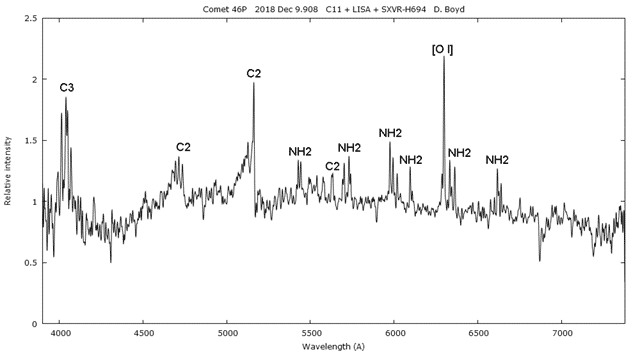If you look up into the early morning sky in the weeks leading up to Christmas, you might just see a bright green spot traversing the sky. Is it Santa doing test runs with his reindeer? Did Rudolph decide to test out a green nose this year?
Not exactly. The SpectraWizard reports that Comet Leonard (also known as “the Christmas comet”) will be the closest to Earth this December. The comet was discovered by Gregory J. Leonard in January of 2021. This comet is not a periodic comet which means that this is a once-in-a-lifetime chance to view. The comet has a hyperbolic trajectory and is moving at over 40 miles per second!
C/2021 A1 (Leonard) on December 7, 2021, via Steven Bellavia in Southold, New York. Thank you, Steve!
Why is it being called the Christmas comet? Besides gracing the Earth with a view so close to the holiday, it also emits a green glow that is characteristic of the holiday. Is the name “Christmas comet” ringing a bell? Comet Leonard isn’t the only comet to be called this nickname. In 2018 Comet 46P/Wirtanen passed by Earth at its closest proximity on December 16th. Comet Wirtanen is a periodic or short-period comet. This means that approximately every 5.4 years we will see Wirtanen. We should see it next in May 2024! Some comets have orbits and we can predict when we will next see them (Wirtanen) and others (like Leonard) have a hyperbolic orbit meaning they will pass through our solar system once before going on into interstellar space. The orbital period usually is determined by where the comet is thought to originate from. Short-period comets are believed to have originated in the Kuiper belt (beyond Neptune), where long-period comets are thought to come from the Oort cloud. Like Comet Leonard, Comet Wirtanen also emits a green glow.
Are all comets green? Would we ever see a fiery red comet passing through the sky? Or even a purple one? Not likely. Most comets have a characteristic blue-green glow to them. This is because of their chemical composition. Comets are small icy bodies that are traveling through the galaxy containing components like dry ice (solid CO2), methane (CH4), ammonia (NH3), and carbon monoxide (CO). As the comet approaches our Sun, it heats up and some of these components start to ionize. What we see is a combination of sunlight that is reflecting off of the dust of the comet and ionized molecules of gas that are emitting photons at a specific wavelength. The green is caused by the ionization of cyanogen (CN)2 and diatomic carbon (C2) both of which emit at green wavelengths.
Now that you know why the comet is green, don’t forget to look up into the sky throughout December to watch the magic of light!

Location of Comet C/2021 A1 (Leonard) on December 15, 2021, about 30 minutes after sunset, facing southwest as seen from the U.S.Thanks David Boyde from the British Astronomical Association for the spectrum of P46. The SpectraWizard will be out capturing Leonard in the nights to come!
Check out the SpectraWizard’s other posts on Astrospectroscopy
Analyzing Astrophotography Filters- The SpectraWizard captures the Orion Nebula
Analyzing the Spectrum of Sirius: SpectraWizard Spots “The Dog Star”
Analyzing the Spectrum of Betelgeuse the Valentine’s Day Star
The SpectraWizard Goes Stellar- AstroSpectroscopy Basics







